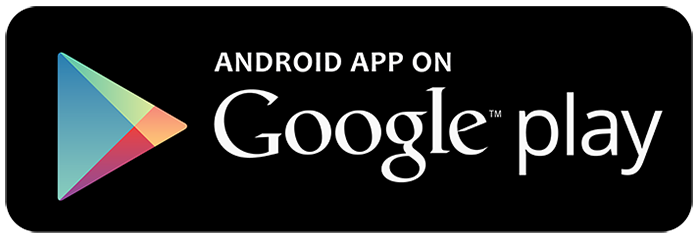The widespread use of technology and the internet has birthed many innovative web tools and processes that make life easier. Every moment, technology is utilized in health, science, education, politics, media, and others. Humans continue to explore innovative technological solutions to life.
Digital technologies have advanced more rapidly than any innovation in our history, reaching around 50% of the developing world’s population in only two decades and transforming societies.
Throughout history, technological revolutions have disrupted the labor force by creating new forms and patterns of work, making others obsolete, and leading to wider societal changes.
Looking at the rate of growth of digital technologies, the 19th Annual Edelman Trust Barometer in 2019 reported that 55% of employees’ work has been taken by automation or other innovation.
The World Economic Forum (WEF) concluded in a recent report that “a new generation of smart machines, fueled by rapid advances in artificial intelligence (AI) and robotics, could potentially replace a large proportion of existing human jobs (3).
Digital technology is fast evolving, and many countries have found ways to shape their human resource to utilize these technologies. The use of these digital technologies has created innovative solutions in health, education, tourism, politics, etc.
Today, digital technologies such as data pooling and AI are used to track and diagnose issues in agriculture, health, and the environment, or to perform daily tasks such as navigating traffic or paying a bill. They can be used to defend and exercise human rights.
Governments and businesses increasingly get access to tools that mine and exploit data for financial and other purposes.
We have seen many of these technologies used in the health sector to diagnose, monitor, consult and treat patients. The World Health Organization defines health as the state of complete physical, mental and social well-being and not merely the absence of disease or infirmity. The attainment of a complete standard of health is a fundamental human right of every individual irrespective of race, religion, political belief, economic or social status.
The use of technology to provide a state of complete health, therefore, makes individuals enjoy their fundamental human rights. To the same end, communication technologies have their application in health.
Telemedicine, a term coined in the 1970s, literally means “healing at a distance”. The World Health Organization defines telemedicine to be delivery of health care services, where distance is a critical factor, by all health care professionals using information and communication technologies for the exchange of valid information for the diagnosis, treatment and prevention of disease and injuries, research, and evaluation, and for the continuing education of health care providers, all in the interests of advancing the health of individuals and their communities.
The key focus of telemedicine is to provide clinical services or support disregarding geographical challenges by using an integrated ICT approach to promote and improve health outcomes.
The World Health Organization’s Global Observatory for eHealth Series accounts for the history of telemedicine and can trace back to the mid to late 19th century when electrocardiograph data was transmitted over telephone wires.
The modern form of telemedicine started in the 1960s, largely driven by military and space technology sectors. A major example was using television to facilitate consultations between specialists at a psychiatric institute and general practitioners at the state mental hospital.
Health has been agreed to be a fundamental human right of every individual by the World Health Organization. This necessitated many governments, NGOs, and CSOs to drive efforts to bridge the access gap.
The Sustainable Development Goals (SDGs) have a goal dedicated to health and wellbeing with some targets to ensure universal access to sexual and reproductive healthcare services (including family planning, information, and education). It also aims to achieve universal health coverage and access to quality essential healthcare services.
The health-seeking behavior of many consumers has shifted due to frustrations in waiting or joining long queues and the cost of healthcare.
There have been clear examples across continents that show the use of telemedicine to improve and increase access to health. The Board on Health Care Services at the Institute of Medicine in 2012, reports that 100 million Americans with chronic disease account for about 75 percent of healthcare expenditures.
A care management program was developed that offered personalized education, monitoring, and feedback at home from a remote disease management support team. The outcome led to reductions in hospitalizations, readmissions, lengths of stay, and costs; improvement in some physiologic measures; high rates of satisfaction; and better adherence to medication.
In a pandemic where physical distancing is key, telemedicine was adopted during the lockdown in counties in Asia.
The Deccan Herald reports that the Ministry of Health and Family Welfare in India issued telemedicine guidelines that allowed hospitals and doctors to continue to render services in the comfort of their homes and reduce overcrowding at hospitals due to the pandemic. In India, teleconsultation is one sure way to improve access to rural and underserved areas.
Accredited Social Health Activist (ASHA) employs telemedicine skills to consult with medical experts in health centers and provide interim care. During the surge of COVID-19, the Asia Pacific region speedily adopted digital health tools and approaches with a number of users on Ping ‘An Good Doctor’ (a Chinese healthcare platform) rising to nearly 900% in January 2020. Singapore, At MyDoc, a platform for telemedicine had active users rose daily by 60% in February and more than 120% increase in March.
The Australian government introduced the telehealth initiative in 2011 that aims to address barriers to accessing medical services. In Australia, telemedicine is used by a vast number of aged people to send details about their blood pressure or sugar levels over the internet to their care providers.
Others engage in video consultations where the patient can see and speak to a physician without leaving their homes. Some initiatives were to use ICT to focus on Ambient Assisted Living (AAL).
Europe has adopted and launched various telemedicine platforms to improve health delivery. The European Commission’s Directorate-General for Health and Food Safety launched the First Clinical Patient Management System (CPMS) in 2017. This is a web-based application that supports diagnosing and treating rare or low-prevalence complex diseases across Europe.
Africa might look like a continent left behind in terms of digital growth, but great efforts are underway to match up with developed countries in terms of telemedicine. Robertson Global Health Systems Corporation and Montana Healthcare Solutions Pty Limited went into agreement with Telemedicine Africa to provide mobile web telemedicine extensions to underserved communities in Africa.
Lietch shared hope of Africa’s telemedicine space having the needed technologies and solar power to support the rural communities. Kenya, well known for its technological affinity, has embraced telemedicine to improve health. The Health Act of 2017 recognizes e-health as a model of health service in Kenya. During the peak of the COVID-19 pandemic, most platforms in Kenya saw significant usage.
Where preventive health and health awareness is key, phone connectivity and internet can be used to reach out to a wider populace. We have seen clear usage of these communication technologies across all continents to reach out to urban, rural and underserved communities.
Telemedicine is a great tool to employ in the health sector in order to leave no one behind in terms of health service delivery. Where building hospital facilities may take months, telemedicine uses the technology at hand to render and serve remotely.
Many health professionals refuse to post to rural communities hence reducing the health force in rural and underserved communities. The workload of these health professionals in rural and underserved communities can be reduced by leveraging available technology to render e-health/telemedicine.
Ghana is on a digitization drive with the government playing roles in the development of a robust framework to support digital growth. The government of Ghana has set up a ministry that has digitization as it’s the main focus. The main aim of this ministry is to identify the digital gap and bridge it.
The Ministry of Communications and Digitization works to keep the global vision and embark on an initiative called the “Digital Ghana Agenda” to cover digitally-deprived communities. There are efforts by the ministry to develop digital infrastructure and enhance the total connectivity of deprived communities.
Government initiatives in using the digital drive for property addressing systems, National Identification Card, e-justice, e-parliament, e-procurement, e-immigration, and e-cabinet have seen many successes and increased access (15). If any of these have made life simpler, then e-health or telemedicine operates similar modules to provide health services to all.
For a clear understanding of the government’s shift to focus on the digital drive, the digital (internet) penetration data in Ghana, Simon Kemp in the “Digital 2021: Ghana” report indicated that as of January 2021, there are 15.70 million internet users in Ghana representing 943,000 increase (6.4%) from 2020. Internet penetration stood at 50% in January 2021.
With any initiatives across the internet, you are sure to have a market that has half of Ghanaians present. The report further details social media users increased by 2.2 million between 2020 and January 2021. Social media presence in January 2021 stood at 8.2 million representing 26.1% penetration.
This also explains the current drive in terms of social media usage in advocacy, service delivery and education by many CSOs, NGOs, and companies. Mobile connections in Ghana stood at 41.69 million in January 2021 (16).
This is a clear indication of how the digital penetration rate is fast advancing in Ghana and how many businesses and organizations have seen a potential market they could take advantage of.
There are many health challenges faced currently in Ghana that are left unaddressed. Some of these health challenges are HIV, communicable diseases, non-communicable diseases, malaria and hepatitis, to name a few. Our health facilities are limited and all hospitals do not match the Western standard.
This has led to long queues in hospitals and people traveling distances to access health services. We could use digital technologies to cut down some of these challenges, using less than a decade to achieve the SDGs, with targets of Goal 3 to end preventable deaths of newborns and children under 5 and reduce neonatal mortality of live births and under-5. Telemedicine could be used by mothers and physicians to constantly get health service even during a pandemic.
Also, the target seeks to end epidemics of AIDS, tuberculosis, malaria, and neglected tropical diseases and combat hepatitis, water-borne diseases, and other communicable diseases. Telemedicine platforms can create tools for prevention, education, or creating awareness on most diseases.
The premature mortality rate for non-communicable diseases such as hypertension, diabetes and cancers falls as a target the United Nations is interested in. There are efforts by Redbird Inc, mpharma, BIMA and other e-health platforms that provide health monitoring, medication tracking and consultation services for these conditions. Having a market that has an internet penetration of 50% as at January 2021, most of these companies have seen a progressive increase in usage.
One other key target that’s of major concern to stakeholders is ensuring universal access to sexual and reproductive healthcare services including family planning, information and education, and integration of reproductive health into national strategies and programmes.
Samson Lardy reports on JoyNews that there have been about 110,000 teenage pregnancies in 2020 according to data derived from Ghana Health Service; District Health Information Management System.
UNFPA, projected in its Interim Technical Note on Impact of COVID-19 in April 2020, that if average lockdown and COVID-19 related disruptions continue for 6 months, 47 million women in low-middle-income countries will be unable to access modern contraceptives.
The number of unintended pregnancies might increase as COVID disruptions are extended (18). Ghana has been a youthful country with more than half of its population under the age of 25 years. The pyramid of Ghana’s population demography can be described as a pyramid with a broad base which means more young people.
Some of these have contributed to the high rate of teenage pregnancy recorded by the Ghana Health Service. Where physical presence is disrupted in service delivery, many young people can be reached by virtue of internet penetration, social media penetration, and mobile connections rate through telemedicine.
Many young people may feel more comfortable using these media than join long queues in hospitals to get access to family planning and other sexual and reproductive health services.
Telemedicine has proven to be a promised path for developed and developing countries with a steady increase in digital penetration rate. Telemedicine has the ability to increase access to healthcare and create convenience when geographical hindrance persists.
How long will pandemics last? What has the COVID-19 pandemic taught us? The clear path is to leverage existing technology to provide the fundamental human rights of the people (health).
Walking through the journey of telemedicine and its fast development in the 21st century, it is clear that telemedicine is what we need in our world today to increase access to health care delivery.









